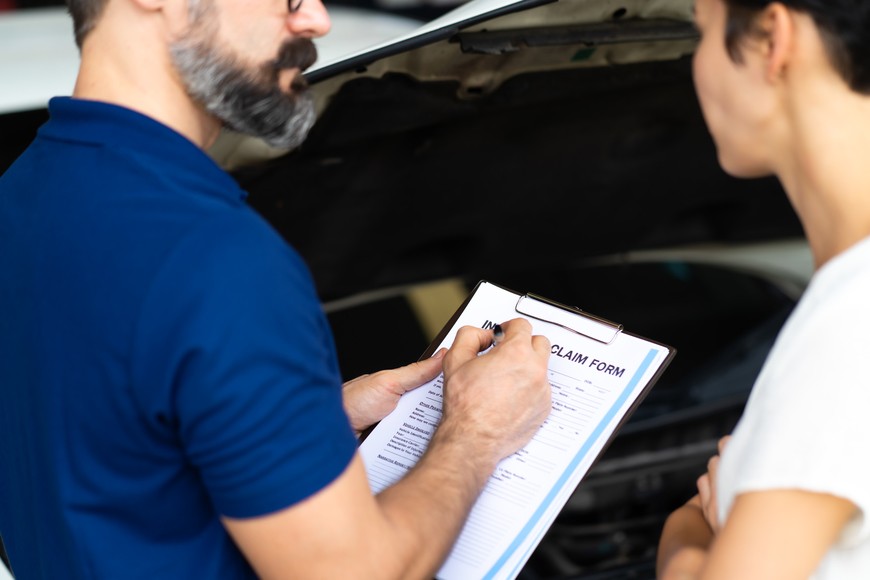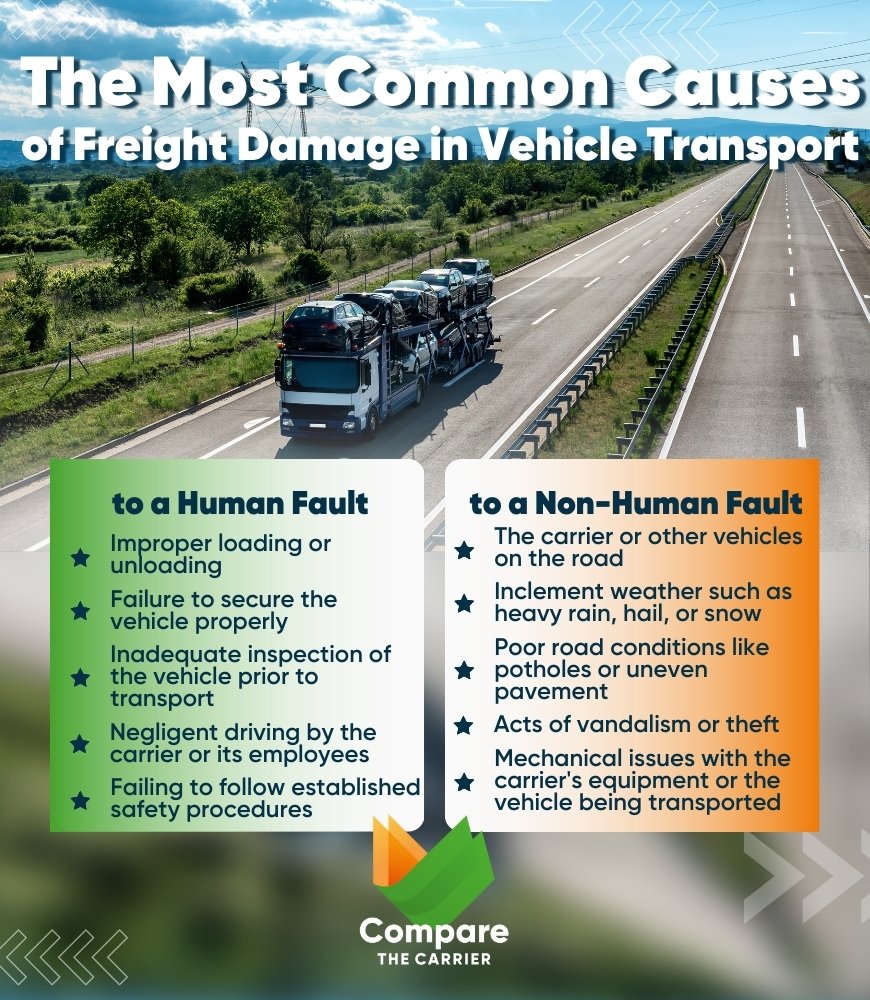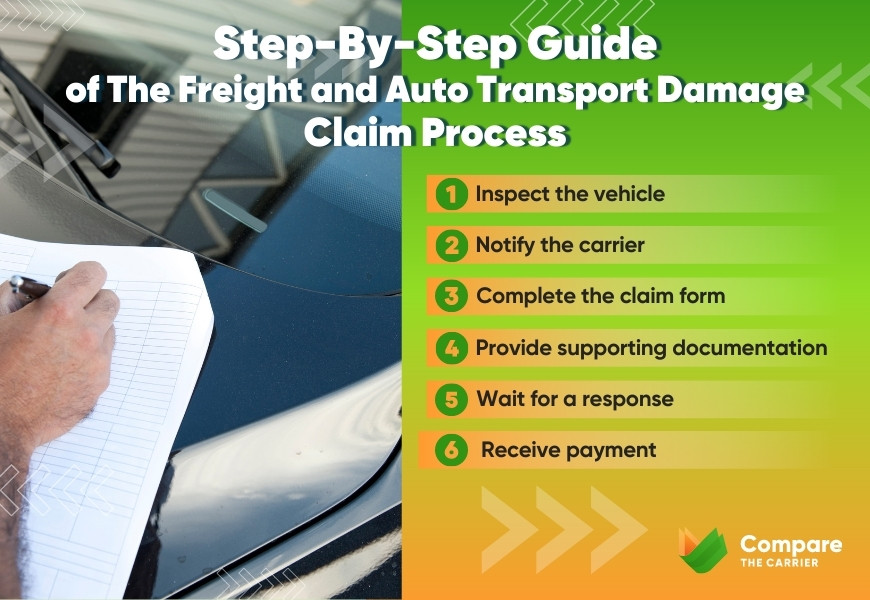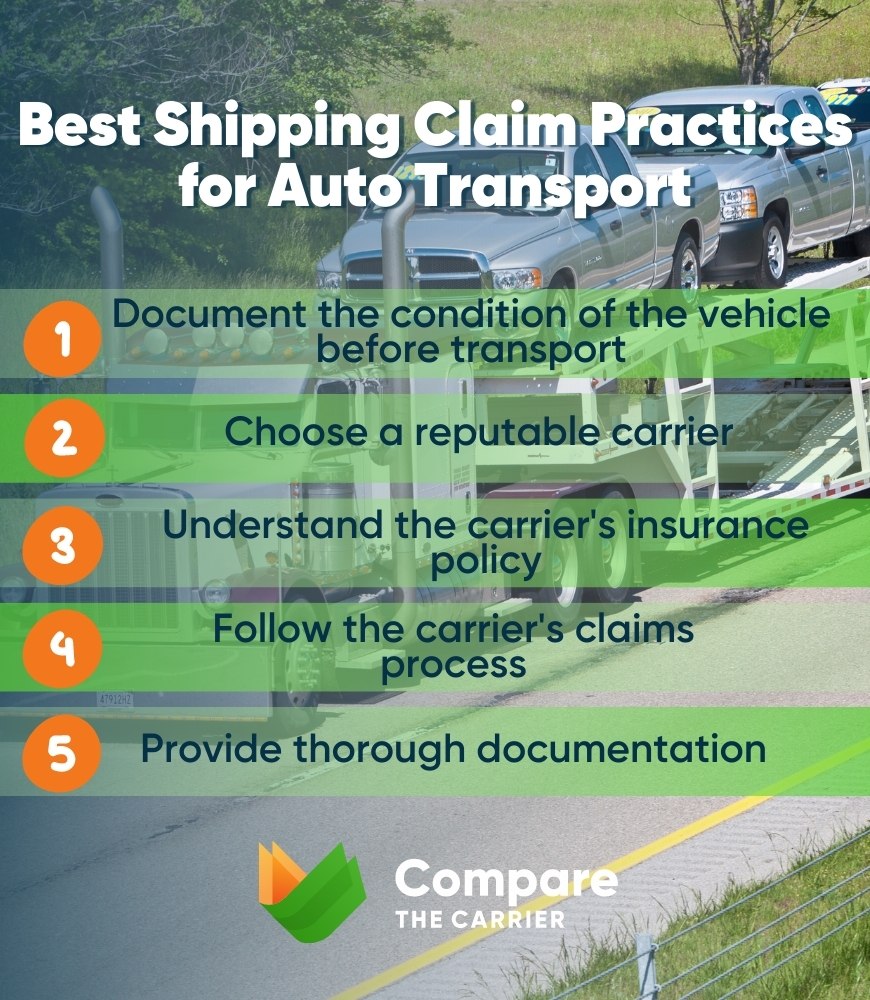Auto transport is a popular service for individuals and businesses that need to move their vehicles over long distances. While this method is generally safe and reliable, though according to FMCSA there are times when damage or other issues can occur during transit.
In these cases, it’s important to know how to file an auto transport damage claim to get compensated for any losses. In this article, we’ll cover everything you need to know about auto transport claims, including what they are, the causes of freight damage, the claims process, and the best practices for filing and resolving claims.
What Is an Auto Transport Damage Claim Form?

An auto transport claim form is a document used to report any damage that occurs to a vehicle during transport. This form is typically provided by the carrier or their insurance company, and it’s the primary means of initiating a claim for compensation.
The standard name for the auto transport damage claim form is the “Freight or Shipping Claim“. The freight or shipping claim is a document that outlines the details of the loss or damage incurred during transportation and is typically used to initiate the claims process with the carrier or their insurance company.
This form will usually ask for information about the vehicle being transported, the type of damage that occurred, and the date and time of the incident. It may also request photos of the damage or other supporting documentation, such as a copy of the shipping contract or bill of lading.
It’s important to note that the damage claim form must be filled out accurately and completely to ensure that the claim is processed in a timely and efficient manner. Failure to provide all the necessary information could result in delays or even the rejection of the claim.
Additionally, it’s a good idea to keep a copy of the damage claim form and any supporting documentation for your records. This can be helpful if there are any issues or disputes that arise during the claims process.
Causes of Freight Damage in Vehicle Transport
While auto transport is generally a safe and reliable way to move vehicles, there are times when damage can occur during transit. Some of the most common causes of freight damage in vehicle transport include

Causes of freight damage due to a human fault:
Causes of freight damage due to a non-human fault:
It’s important to note that while some causes of damage may be outside of the carrier’s control, they still have a responsibility to take reasonable steps to ensure that the vehicle is transported safely and without unnecessary risks. If damage occurs due to the carrier’s negligence, the shipper may be entitled to compensation through an auto transport claim.
Freight and Auto Transport Damage Claim Process
In the event of damage to a vehicle during transport, the shipper should file an auto transport damage claim with the carrier or their insurance company as soon as possible. Here’s an overview of the freight and auto transport damage claim process:

It’s important to note that the specific claims process may vary depending on the carrier or their insurance company, so be sure to follow their instructions carefully to ensure that the claim is processed promptly and efficiently.
And it’s worth noting that some carriers’ insurance policies may have a deductible, meaning that smaller damages may not be covered or that the shipper may be responsible for a portion of the cost of repairs.
Be sure to review the carrier’s insurance policy before shipping your vehicle to understand any limitations or exclusions. Additionally, it’s a good idea to consider purchasing additional insurance coverage or verifying that your own insurance policy covers vehicle transport to ensure that you are adequately protected in the event of damage during transport.
Best Auto Transport Claim Practices for Shipping
When filing an auto transport damage claim, there are a few best practices that can help ensure that the process goes smoothly and that the shipper receives fair compensation for any damages:

Keep following these best practices and you can ensure a smooth and efficient auto transport damage claim process and increase the likelihood of receiving fair compensation for any damages that may occur during transport.
Filing an auto transport damage claim can be a stressful and complicated process, but by understanding the car shipping process and following best practices, shippers can help to ensure a successful outcome. It’s important to document the vehicle’s condition before transport, choose a reputable carrier, and provide thorough documentation when filing a claim. By doing so, shippers can increase the likelihood of receiving fair compensation for any damages that may occur during transport.
FAQ
What is an auto transport damage claim form?
It is a document used to file a claim with the carrier’s insurance company if a vehicle is damaged during transport.
What are some common causes of freight damage in vehicle transport?
Causes include accidents, rough handling during loading/unloading, weather-related damage, and inadequate packaging or securing of the vehicle.
What is the auto transport damage claim process?
It involves documenting the damage, contacting the carrier, filing a claim with their insurance, and providing supporting documentation.
What are some best practices for filing an auto transport damage claim?
Best practices include documenting the vehicle’s condition, choosing a reputable carrier, understanding their insurance policy, and providing thorough documentation.
Will all damages to my vehicle during transport be covered by the carrier’s insurance?
It’s important to review the carrier’s insurance policy for any limitations or exclusions that may apply. Some policies have deductibles or may not cover smaller damages.












